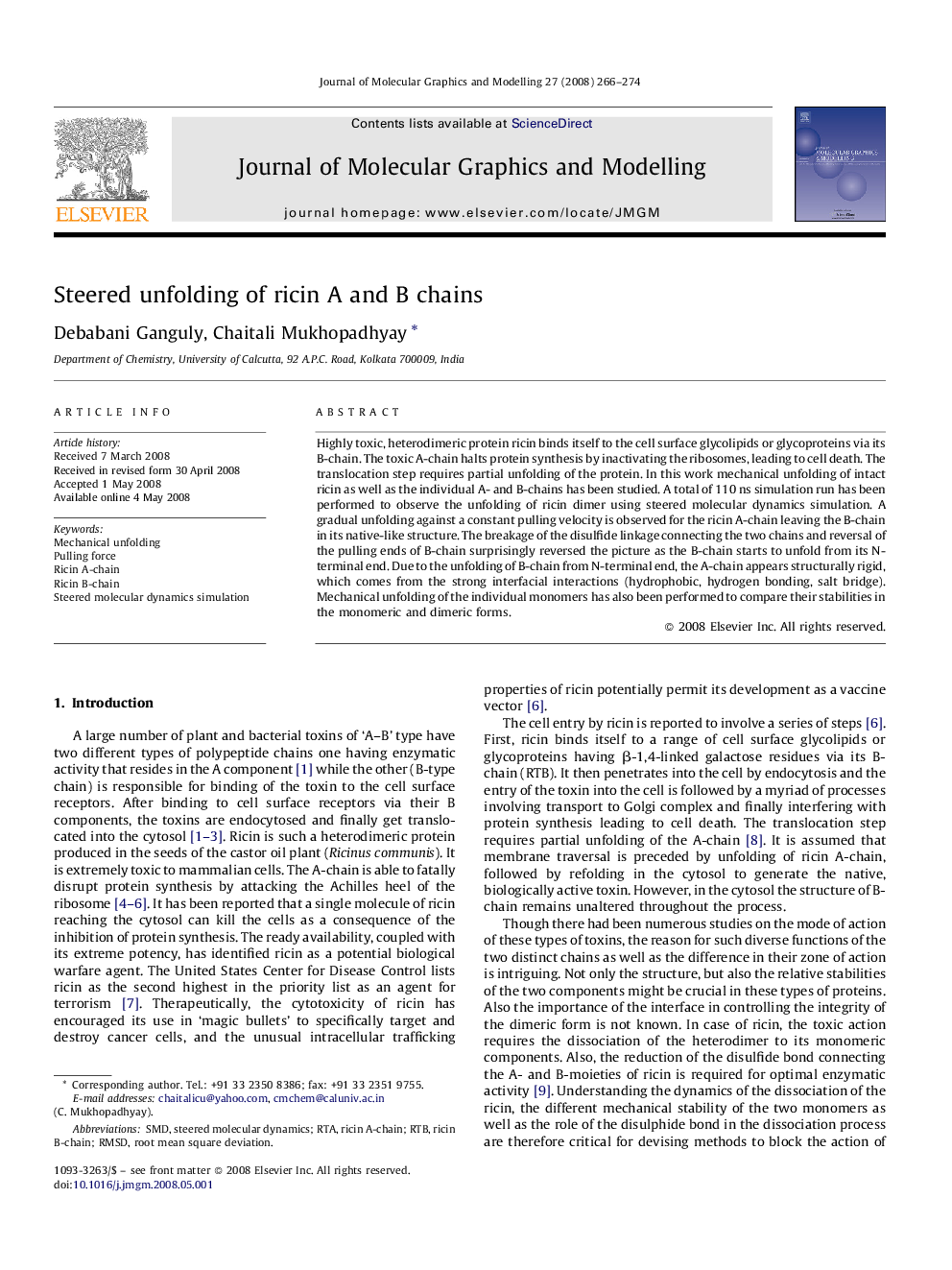| Article ID | Journal | Published Year | Pages | File Type |
|---|---|---|---|---|
| 443827 | Journal of Molecular Graphics and Modelling | 2008 | 9 Pages |
Highly toxic, heterodimeric protein ricin binds itself to the cell surface glycolipids or glycoproteins via its B-chain. The toxic A-chain halts protein synthesis by inactivating the ribosomes, leading to cell death. The translocation step requires partial unfolding of the protein. In this work mechanical unfolding of intact ricin as well as the individual A- and B-chains has been studied. A total of 110 ns simulation run has been performed to observe the unfolding of ricin dimer using steered molecular dynamics simulation. A gradual unfolding against a constant pulling velocity is observed for the ricin A-chain leaving the B-chain in its native-like structure. The breakage of the disulfide linkage connecting the two chains and reversal of the pulling ends of B-chain surprisingly reversed the picture as the B-chain starts to unfold from its N-terminal end. Due to the unfolding of B-chain from N-terminal end, the A-chain appears structurally rigid, which comes from the strong interfacial interactions (hydrophobic, hydrogen bonding, salt bridge). Mechanical unfolding of the individual monomers has also been performed to compare their stabilities in the monomeric and dimeric forms.
